Great Underwater Wall
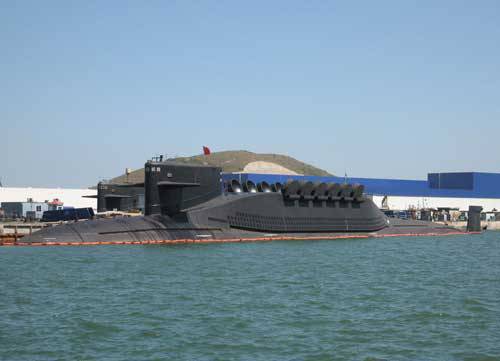
In 2009, the PRC Navy celebrated two significant dates - the 55 anniversary of the formation of national submarine forces and the 35 anniversary of the commissioning of the first Chinese nuclear submarine (APL). PLARK 885 project (Severodvinsk).
Unfortunately, these events did not find proper coverage in the Russian press, and this is about the neighboring great power, which is now a full member of the world nuclear underwater club. In addition to the United States (the “founding father”), Russia and China also includes the United Kingdom, France and India, which already have experience in operating the 1988 Soviet-made multi-purpose missile submarine of the 1991-670 years and building its own nuclear submarine - rocket carrier "Arikhant".
PORT-ARTURIAN BEGINNING
This year is also an anniversary year in this respect - in December 20 will be fulfilled years after the construction was completed. stories China's submarine series, the appearance of which has made major adjustments to the geopolitical balance of sea power in the Pacific Ocean in general and in the waters washing East and Southeast Asia, in particular.
It all started on 24 on June 1954, when in Lüshun (Port Arthur) national flags were raised on the first two submarines of the Navy of the People’s Liberation Army of China (PLA) - New China-11 and New China-12 "(According to other sources -" Defense "). Such names were assigned to the People's Republic of China Soviet diesel submarines C-52 and C-53 of the IX-bis series, built in the 1943 year. This event so touched the mayor of Shanghai, Marshal Chen Yi, that when he visited New China-11, he made a poetic note in her logbook, which sounds like this in the Russian translation:
Airplanes are flying, ships are sailing, We need to master the Submarines. We dive into the ocean, we are a thousand, Enemy will not be mercy!
Comrade Chen Yi was, of course, somewhat overdone with the depth, since the Chinese measure of length “li” corresponds to 576 meters, but the marshal’s emotional impulse is quite understandable: mastering (with the help of Soviet instructors) even old submarines became a serious foundation for the future.
The case was not limited to the first two “New China”, and soon the PLA Navy was received from the Pacific fleet USSR several more submarines of types C and M. But the milestone in the development of the submarine forces of communist China was the transfer to him in 1954 of the drawings and construction technology of Soviet medium diesel submarines of project 613, and five years later - design and technical documentation for medium diesel submarines of the project 633.
Since the end of the 50-X - the beginning of the 60-s, China has built more than a hundred submarines of these projects, which allowed him to reach the third place in the world in the total number of submarines after the USSR and the USA in the next decade. And most importantly - the Chinese have acquired the experience of submarine construction.
However, Beijing did not intend to limit itself to diesel-electric submarines (and their Chinese later learned to design independently). Knowing the successes of the Americans in building the nuclear submarine fleet and being confident that the Soviet Union was not sitting idly as well (perhaps the leaders of the Celestial Empire had some information about the construction of the first Soviet nuclear submarines in Severodvinsk and Komsomolsk-on-Amur), the leaders of China in 1958 year, the Kremlin was asked to provide China with technical documentation for nuclear submarines, but were refused, although, perhaps, not too categorical. Moscow nevertheless considered the possibility of transferring nuclear submarines of the 659 project to Beijing - carriers of P-5 cruise missiles in nuclear (!) Equipment designed to destroy area-based ground targets.
Given that the use of P-5 missiles in conventional equipment did not make sense due to the low accuracy of their firing (even in the improved P-5D modification, the circular probable deviation - KVO - was 4-6 km), it is appropriate to assume that the USSR really had intentions to equip the PLA with a nuclear missile weapons. But it seems that the Celestial warheads would receive nuclear warheads only in the event of a real danger of war with the United States and its allies. Moreover, the Chinese sailors should have had (and be able to use) missiles carrying the YaBC. This apparently explains why, for example, in the second half of the 50-s, Beijing was supplied with documentation for the medium-range strategic ballistic missile Р-5М, and a little earlier - for combat tactics of operational-tactical ballistic missiles Р-2 (mastered in production as " Dunfen-1 ") and P-11 (in Chinese nomenclature -" type 1060 "). On the basis of the P-5, the first Chinese model of a nuclear missile weapon, the Dongfang-1966 rocket, was developed and adopted for use by the PLA in 2.
This assumption is also supported by the fact that the USSR supplied China with two diesel submarines of the 629 project - carriers of ballistic missiles (one submarine, towed from Komsomolsk-on-Amur, was built afloat in China in 1960, and the second was assembled from Soviet nodes and sections in 1964-m). Together with them they sent six combat ballistic missiles of the surface launch of the R-11FM - three per boat (plus one more training missile).
The ballistic missile R-11FM, adopted by us in 1959 year, became the world's first weapon of this class for submarines. Its use in the Soviet Navy was envisaged only in nuclear equipment (charge power - 10 kt at a range of 150 km and KVO 8 km). In fact, it was about the transfer of China's newest, though not very sophisticated, domestic naval weapons intended to destroy ground targets, that is, de facto strategic! At that time, only nuclear warheads were not in the hands of the Chinese.
A WEDDING WILL WAIT!
However, the beginning of the cooling of Soviet-Chinese relations, which soon turned into a phase of confrontation, hindered the implementation of these plans. Since Mao Zedong was not going to change the course of opposition to the “Soviet revisionists” taken after the 20th CPSU Congress, there was no doubt about the speedy withdrawal of military-technical cooperation with Moscow from the PRC leadership.
Therefore, as early as July 1958, the Politburo of the Central Committee of the Chinese Communist Party decided that the country should independently create an atomic submarine and sea-based ballistic missiles. Obviously, against the background of the American ballistic missile Polaris underwater launch, the tests of which were successfully completed at that time, the Soviet R-11FM that appeared to the Chinese soon looked more than modest, yielding to it in 14,4 times and absolutely in the concealment of the use.
Chairman Mao commented on the decision of the PRC's highest party leadership in his peculiarly highly pathetic manner: “We must build nuclear submarines, even if it takes 10 thousands of years to do it!”. Some sources claim that the "great helmsman" set such a task back in the 1956 year, that is, before China began building diesel submarines.
The history of the creation of the nuclear submarine fleet of China is full of drama. This program had for the Celestial character a national priority of special importance, comparable to the creation of its own nuclear weapons (1964) and the launch of the first Chinese satellite, Dunfanhon-1 (1970), into near-earth orbit.
The implementation of this program immediately encountered difficulties of both internal and external order. The latter are explained by a break with the USSR, the help of which probably would have allowed the PLA to acquire atomic submarines of Soviet design already in the first half of the 60-s. On the other hand, thanks to the support of Moscow in the previous decade, national cadres of shipbuilders, submariners, nuclear scientists and gunsmiths appeared in China, and their own industrial base for the construction of submarines was deployed, which was crucial for the implementation of the plan.
The group of specialists involved in the implementation of the “1958 project” (this name was given to the atomic undersea program of the PRC) formed in 09 consisted of young physicists, shipbuilders, nuclear power engineers and rocket engineers. The group was led by Pen Shilu, who had just graduated from the Moscow Energy Institute, and later became an academician, one of China's leading scientists in the field of nuclear science and technology.
Talented young people with great enthusiasm took up the assigned work. An amusing episode testifies to the working mood that prevailed in the group. At a friendly party, one of the project's developers suddenly unceremoniously left the partner right during the dance with an exclamation: “I will not marry until our boat enters service!”. And he kept his word, having signed with her in 16 years - only after this long-awaited event happened.
But the main obstacle turned out to be internal problems.
First, the implementation of the program was affected by a shortage of qualified personnel and resources, since the highest priority was given to the creation of nuclear weapons, the accelerated deployment of ground-based ballistic nuclear missile systems and the space program. Some of the specialists were “withdrawn” from the “09 project” and aimed at solving precisely these problems.
Secondly, the Cultural Revolution that broke out at the end of 60, which caused enormous damage to Chinese society and economy, led to wild excesses in relation to naval specialists and the scientific and technical intelligentsia. Thus, the repressions struck around 3800 experienced naval commanders, including 11 former admirals (in 1965, military ranks in China were canceled, they were restored in 1988-m).
The school of scuba diving in Qingdao from 1969 to 1973 year and completely turned out to be closed. And one of the leaders of the “09 project”, Huang Xiuhua, was severely persecuted by the Red Guards, who organized forced interrogations, forcing him to confess to belonging to foreign agents. And only the personal intervention of the Premier of the State Council of the People's Republic of China, Zhou Enlai, was saved by Huang Xiuhua from being sent to a pig farm - such “corrective” sentence was made to him by the torturers. (By the way, how can you not recall that the designer of the first Soviet nuclear submarine of the 627 Leninsky Komsomol project, Vladimir Peregudov, also went through repressions at one time, having fallen into the NKVD's “oil gloves” on the absurd suspicion of espionage ...)
IN CHINESE WITH FRENCH ACCENT
The fact of the espionage charges against the developers of the “09 project” can obviously be explained by the fact that the breakdown of scientific and technical ties with the USSR forced the Chinese to turn to Western firms, primarily French, for engineering support in creating a nuclear submarine.
The project reworked with the participation of the French was assigned the number 091, and the lead nuclear submarine Changzheng-1 was laid at the shipyard in Huludao in the year 1967. “Changzheng” is translated as “The Great March” (in honor of the historical campaign of the Chinese Red Army in 1934-1935) - all of the Chinese submarines are given such a name with the corresponding sequence number. In the United States and NATO, the submarines of the 091 project were called "Han."
The construction of the Changzheng-1 was delayed due to technical and economic reasons for a long seven years - it was accepted into the PLA Navy only on August 1 1974 of the year, and even with significant defects, including those related to the first circuit of the nuclear power plant. Eliminating them and fine-tuning other systems took another six years, so the boat entered the combat patrol only in 1980 year. The following four ships were handed over to seafarers in 1980-1990, and the accumulated experience reduced the duration of construction (the latter in the Changzheng-5 series was under construction for about four years).
By their architecture, the first Chinese boats of the 091 project are very reminiscent of, as it were, the increased size of the French submarines of the “Rubis” type, built in 1976-1993 (six units in total). However, perhaps we should say the opposite - it is very similar to the fact that for the French the construction of “Changzheng-1” became a testing ground for working out optimal solutions embodied in their own ships. After all, their first attempt to build a nuclear submarine Q-244, referring to the end of 50-x, ended in failure. She had to finish building as an experimental missile submarine "Zhimnot" with a diesel-electric power plant.
The 091 project's Chinese submarines and the Rubis-type French submarines are not equipped with a main turbo gear unit, since the propeller is driven by a main propeller driven by a direct current, into which the alternating current of the turbo generators is converted. On the submarines installed one water-cooled reactor with thermal power 48 MW.
It would seem that the chosen electric propulsion scheme and the moderate power of the reactor installation should have ensured the relative low noise of the boat, but in fact it turned out to be 2,68 times more noisy than the most powerful American atomic submarine of the Los Angeles type with turbo unit. This, in particular, led to the low anti-submarine potential of the first Chinese nuclear submarines.
The boats of the 091 project were created as “purely” torpedoes, but the last three of them received anti-ship missiles YJ-8, launched from surface launchers in a surface position, in addition to the torpedo tubes, which inevitably unmasks the ship.
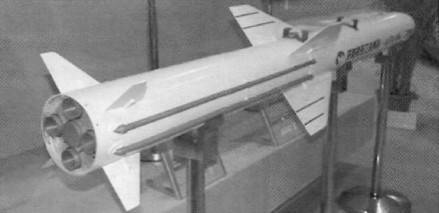
Nevertheless, the atomic submarines of the 091 project became the subject of national pride in the PRC, despite serious "childhood diseases" (however, some of them managed to be "cured", for example, related to the reliability of the reactor installation). They have found wide use for demonstrating the power of the Celestial Navy of China, primarily in the seas washing its coast. Cases of undisguised (even in spite of detection) prosecution by the first Chinese nuclear submarines of American aircraft carrier groups have been noted.
OCEAN TOMORROW CIRCUITS
Today, the "Changzhen-1" withdrawn from service of the PLA Navy. New multi-purpose submarines of the 093 project (in the West, they are classified as Shan) are already being replaced by it, the construction of which began at the end of the 90's. At least one 093 submarine of the 2005 year was already sent for sea trials, and by 2010 it was expected that the Chinese fleet would contain four nuclear submarines of this type (there should be six of them by 2015).
It is assumed that in terms of their tactical and technical elements, the new Chinese boats are close to the 70-80's foreign submarines - the Soviet 671РТМ project or even the American Los Angeles first and second series, and as part of their armaments, promising maneuvering cruise missiles for accurate destruction of ground objects.
The only Chinese nuclear-powered missile submarine with ballistic missiles (SSBN) "Changzheng-092" built in the 6 project (in the West, the conditional category "Xia" was adopted for it) was commissioned in 1987 after a long period of completion, followed by launching 1981-m (laid submarine in 1978-m). The basis for the 092 project was the 091 project - in principle, it is the same submarine, but with a missile compartment embedded in the hull.
Practically the same nuclear power plant and torpedo and electronic weapons systems are used on the “Xia” class boat. The Chinese specialists brought great difficulty in finishing the 12 complex of solid-fuel ballistic missiles from the underwater launch “Junlan-1”: the first launch of the BR from the submarine in 1985 was unsuccessful, and the successful missile launch of “Changzheng-6” made only in 1988.
According to its characteristics, the monoblock Juylan-1 is close to the American Polaris A-1 rocket, but inferior to it in firing range (total km 1700).
It is clear that the only one Changzheng-6, the technical reliability of which, moreover, left much to be desired, could not be considered the basis of Chinese naval strategic nuclear forces: to ensure constant combat patrols, at least three such boats are necessary. This problem is solved by the deployment of new submarines of the type “Datsyngui” (project 094), which are developed using Russian technologies and represent a significant step forward compared to the boat project 092.
The SSNB of the 094 project (in the West, it is conventionally referred to as the Jing class) differs from its predecessor in a more reliable nuclear power plant, less noise, advanced sonar and radio-electronic systems and can be considered as similar in its characteristics to the Russian SSBN of the 667BDRM project, but with a smaller ammunition .
The Datsyngui missile armament is represented by 12 solid-fuel ICBMs of the underwater launch Julan-2 (firing range is at least 8000 km). Unlike the first Chinese ballistic missile with the underwater launch of the "Junlan-1", obsolete by the time of its entry into service, the "Junlan-2" is an intercontinental missile carrying a split head for individual targeting.
According to its characteristics, the Juilan-2 rocket is comparable to the American Trident C-4 SLBM of the model 1979 of the year. When patrolling the northeast of the Kuril Islands rocket attacks from the board "Datsyngui" can be applied to targets located on 75% of the continental territory of the United States. According to sources close to US intelligence, the first submarine of this project began to undergo sea trials in the 2004 year, and at present, PLA Navy allegedly have two “Datsyngui” type submarines. In total, the series includes four or even five SSBNs, which must be fully deployed in 2015-2020.
Thus, the PRC is currently implementing a limited program for the construction of a nuclear submarine fleet, whose quantitative parameters are comparable with the English and French. This corresponds to the overall objective of the current stage of development of national naval forces, which by 2020 should control the vast ocean zone from the Kuril Islands to the Mariana and Caroline Islands, New Guinea and the Malay Archipelago. In a more distant future, by the year 2050 it is supposed to have a full-fledged fleet capable of operating in any areas of the World Ocean.
Speaking of this perspective, experts already now mention the future Chinese nuclear submarines - the 095 project, intended, inter alia, to ensure the combat stability of the alleged Chinese aircraft carrier groups, and the SSBN of the 096 project, similar to American Ohio-type submarines. One can only guess about the power of such a fleet, but there is no reason to doubt that a dynamically developing China has all the prerequisites for its creation.
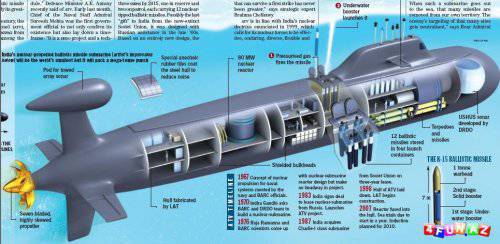
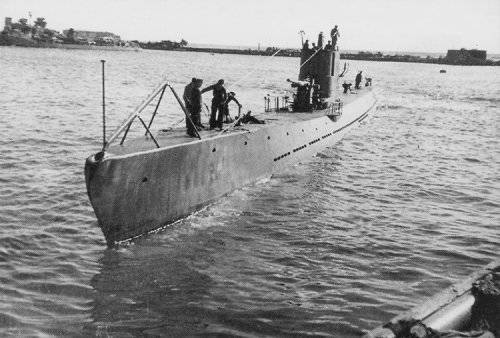
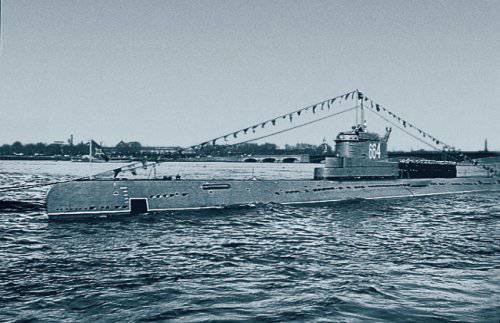
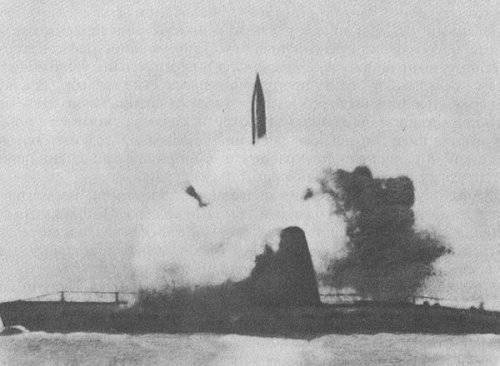
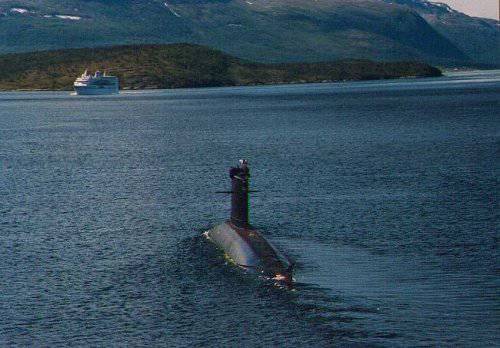
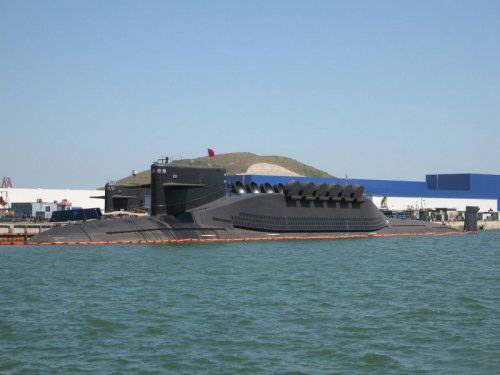
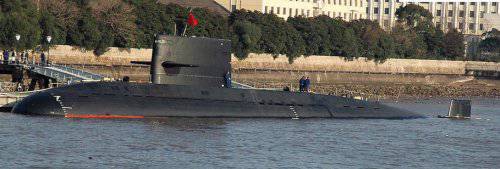
Information